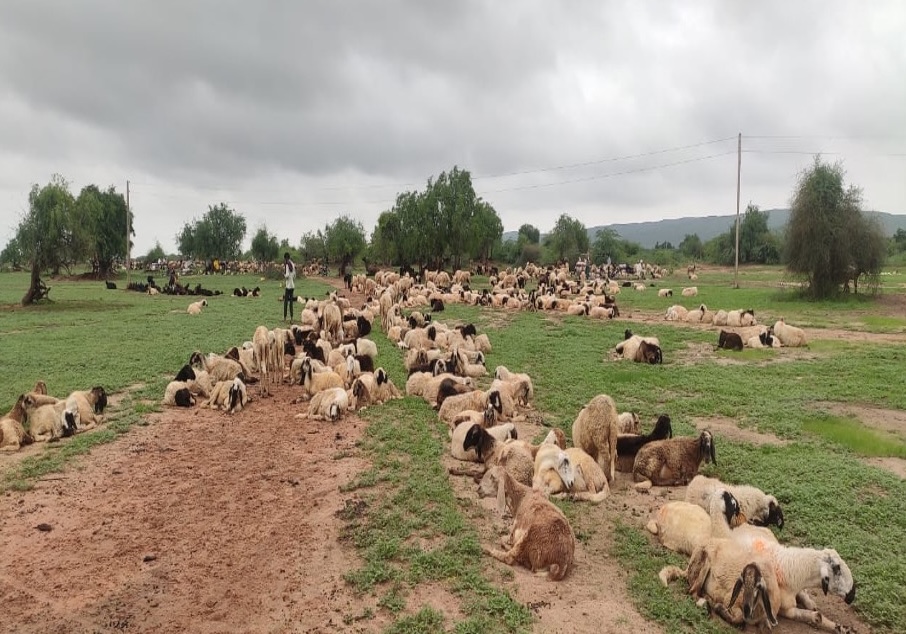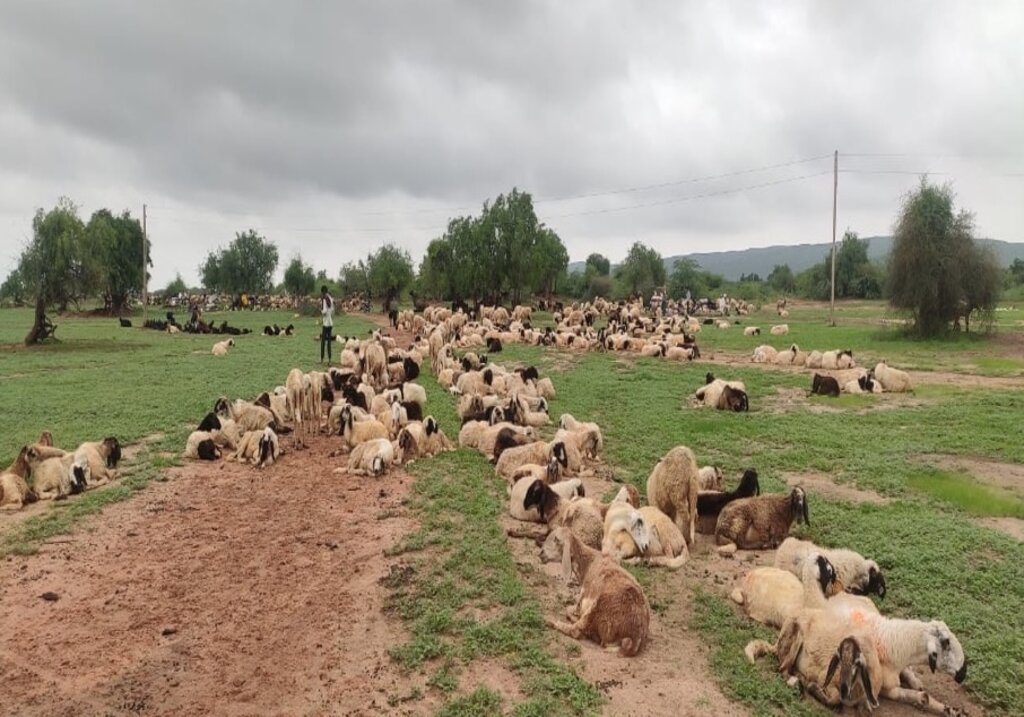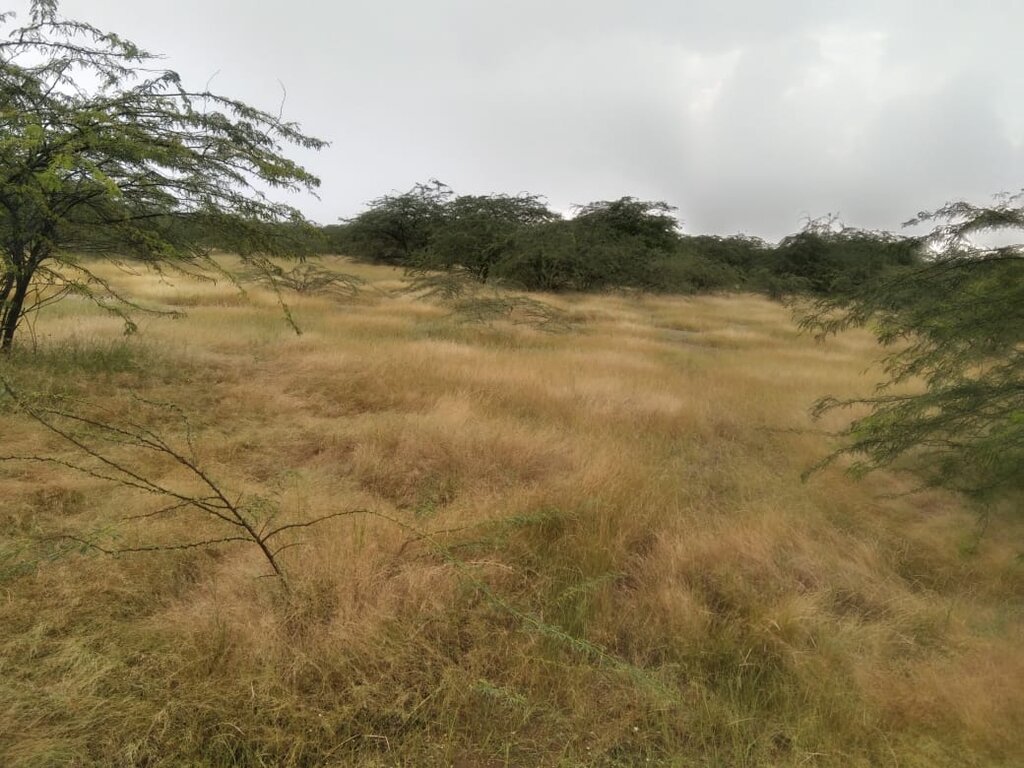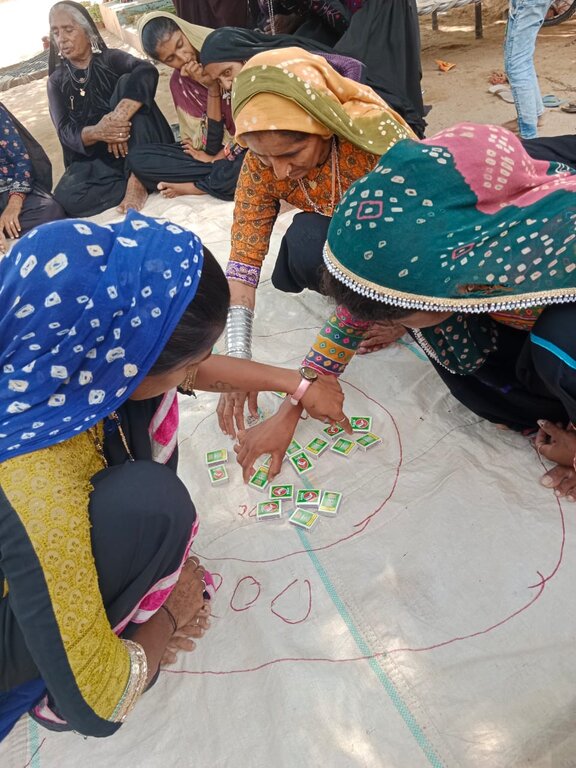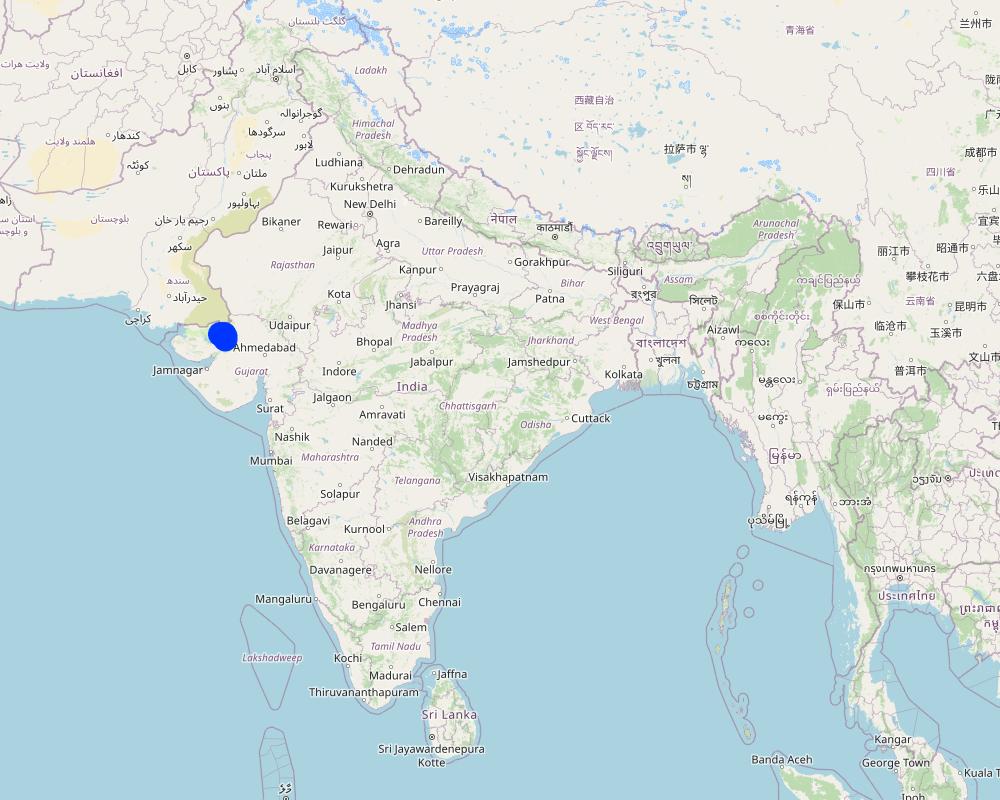TRANSFORMING VILLAGE WASTELAND INTO A RICH PASTURE [印度]
- 创建:
- 更新:
- 编制者: Bhavana Rabari
- 编辑者: –
- 审查者: Udo Höggel
Jamin Sudharana
technologies_7423 - 印度
查看章节
全部展开 全部收起1. 一般信息
1.2 参与该技术评估和文件编制的资源人员和机构的联系方式
关键资源人
Project Co-ordinator:
Desai Bhavana
Maldhari Rural Action Group
印度
Communication Officer:
Sheth Megha
MARAG - Maldhari Rural Action Group
印度
有助于对技术进行记录/评估的机构名称(如相关)
Maldhari Rural Action Group (MARAG)1.3 关于使用通过WOCAT记录的数据的条件
编制者和关键资源人员接受有关使用通过WOCAT记录数据的条件。:
是
1.4 所述技术的可持续性声明
这里所描述的技术在土地退化方面是否存在问题,导致无法被认为是一种可持续的土地管理技术?:
否
2. SLM技术的说明
2.1 技术简介
技术定义:
Under the leadership of the Pastoralist Women Land Management Committee at village level, 100 acers of village wasteland were transformed into a rich pastures to be used by village livestock herds and, in this way providing food and livelihood security to local communities and restoring biodiversity within native grasses and indigenous livestock breeds.
2.2 技术的详细说明
说明:
Overview
The initial project focused on 10 villages within Kutch District, Gujarat, Western India. Each of these villages developed 10 acres of associated common pastureland. In total, 100 acres were developed. The project offered local solutions to develop village wastelands (common term in India for degraded lands) into ecologically regenerated pasturelands. Village pastureland, developed in such manner was used for open and free grazing for livestock. This enhanced milk production thus generating income for village women and their families.
Process
MARAG formed a WPLMC (Women’s Pastureland Management Committee) in each village consisting of 10 members. Each WPLMC managed 10 acres of these common pasturelands in their respective villages. WPLMCs were trained and engaged in land mapping and demarcation through GPS, soil testing, land cleaning and land levelling, selection of native grass seeds, sowing of such grasses, and general maintenance and management of the land.
The rules and regulations for land management were determined by the WPLMCs. WPLMCs jointly decided to use 5 of 10 acres of each village gaucher (local term for pasture) to develop traditional grasses for small ruminants. Out of this, 2.5 acres were developed as fodder for large livestock and 2.5 acres were developed for drought tolerant species. Finally, the WPLMCs documented the regulation and use of pastureland and the responsibility of the management.
The following processes were employed for pastureland regeneration:
1.Silvipasture practice
2.Land treatment and afforestation
3.Reintroduction of traditional grass seeds.
4.Tapping of indigenous pastoral knowledge for grass development and breed conservation.
5.Forming and strengthening Women Pastureland Management Committees (WPLMC) at village level for project sustainability.
6.Using technology and capacity building of the WPLMC (e.g. GPS tools for land measuring, mobile app use for determining land fertility and water catchment etc.)
Livestock rearing can be a tool for the sustainable management of land, especially in arid and semiarid areas, by improving soil health, mitigating desertification and protecting the local ecosystem against invasive species. Sustanable livestock grazing breaks soil crust, increasing rain water absorpstion and converts grass into organic waste, increasing soil health and regenarating grasses by spreading seed.
Project Impact
1.Developed women leadership and management capacities as well as decision making throughout the project process.
2.Ownership of the pastureland development taken by pastoralist women.
3.Pastoralist women learning and using the smartphone for land mapping. Such knowledge is easily copied by other women in the village.
4.Traditional knowledge on pasture grasses women to deepen their knowledge on pasture management.
5.Biodiversity conservation through traditional knowledge.
6.Secured livelihood security and food sovereignty.
2.3 技术照片
2.4 技术视频
摄影师的名字:
Bhavana Rabari
2.5 已应用该技术的、本评估所涵盖的国家/地区/地点
国家:
印度
区域/州/省:
Gujarat
有关地点的进一步说明:
Dhabda village of Kutch District
具体说明该技术的分布:
- 适用于特定场所/集中在较小区域
技术现场是否位于永久保护区?:
否
Map
×2.6 实施日期
注明实施年份:
2022
2.7 技术介绍
详细说明该技术是如何引入的:
- 作为传统系统的一部分(> 50 年)
注释(项目类型等):
It is rooted in traditional practices but now incorporates technology. Pastoralists use smartphones to map grazing lands, identify water catchment areas, and determine more fertile land.
3. SLM技术的分类
3.1 该技术的主要目的
- 减少、预防、恢复土地退化
- 保护生态系统
- 保持/提高生物多样性
- 创造有益的经济影响
- 创造有益的社会影响
3.2 应用该技术的当前土地利用类型
同一土地单元内混合使用的土地::
是
具体说明混合土地使用(作物/放牧/树木):
- 林牧业
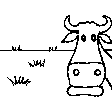
牧场
粗放式放牧:
- 半游牧畜牧业
集约放牧/饲料生产:
- 改良牧场
动物类型:
- 水牛
- 牛 - 奶制品
- 山羊
- 绵羊
是否实行作物与牲畜的综合管理?:
否
产品和服务:
- economic security, investment prestige
- 奶类
- 毛料
品种:
水牛
品种:
牛 - 奶制品
品种:
山羊
品种:
绵羊
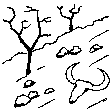
不毛之地
具体说明:
Village wasteland
3.3 由于技术的实施,土地使用是否发生了变化?
由于技术的实施,土地使用是否发生了变化?:
- 否(继续问题3.4)
3.4 供水
该技术所应用土地的供水:
- 雨养
3.5 该技术所属的SLM组
- 畜牧业和牧场管理
- 改良的地面/植被覆盖
- 地下水管理
3.6 包含该技术的可持续土地管理措施
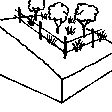
管理措施
- M2:改变管理/强度级别
- M3:根据自然和人文环境进行布局
- M5:物种组成的控制/变化
3.7 该技术强调的主要土地退化类型

土壤风蚀
- Et:表土流失

生物性退化
- Bc:植被覆盖的减少
- Bh:栖息地丧失
- Bq:数量/生物量减少
- Bs:质量和物种组成/多样性的下降
3.8 防止、减少或恢复土地退化
具体数量名该技术与土地退化有关的目标:
- 防止土地退化
- 修复/恢复严重退化的土地
4. 技术规范、实施活动、投入和成本
4.1 该技术的技术图纸
技术规范(与技术图纸相关):
Four squares of pastureland from a total of 10 acres pastureland per village, mainly at the same altitude without any slope were developed. Trees and cultivating native and indigenous grasses species with women's traditional knowledge were in focus.
作者:
MARAG - Maldhari Rural Action Group (Community)
日期:
01/08/2024
4.2 有关投入和成本计算的一般信息
具体说明成本和投入是如何计算的:
- 每个技术区域
注明尺寸和面积单位:
10 acres
如果使用本地面积单位,注明转换系数为1公顷(例如1公顷=2.47英亩):1公顷=:
1 hectare = 2,47 acres
其它/国家货币(具体说明):
INR
如相关,注明美元与当地货币的汇率(例如1美元=79.9巴西雷亚尔):1美元=:
84.35
注明雇用劳工的每日平均工资成本:
250
4.3 技术建立活动
| 活动 | 时间(季度) | |
|---|---|---|
| 1. | Organising pastoral women management committee | September - October |
| 2. | Capacity building of committee on SLM technologies | December, year 1 |
| 3. | User rights for the village wasteland under WPLMC from revenue department | November - December year 1 |
| 4. | Removal of invasive species | January- February |
| 5. | Land leveling | March - Before Monsoon |
| 6. | Pasture border trenches | April - Before Monsoon |
| 7. | Sowing of grasses and tree planting | July - August |
| 8. | Rain-fed irrigation | Throughout Monsoon (June to October) |
| 9. | Protection from wild animals | April - December year 1 |
| 10. | Livestock grazing | August till grass ends |
| 11. | Fodder harvesting | November - March |
| 12. | Establishing and implementation of pastureland user and management rights | December year 1, December year 2 |
4.4 技术建立所需要的费用和投入
| 对投入进行具体说明 | 单位 | 数量 | 单位成本 | 每项投入的总成本 | 土地使用者承担的成本% | |
|---|---|---|---|---|---|---|
| 劳动力 | GPS - mapping | Person-Day | 2.0 | 500.0 | 1000.0 | |
| 劳动力 | Land leveling and preparation | Person | 15.0 | 550.0 | 8250.0 | 25.0 |
| 劳动力 | Seed sowing | Person | 3.0 | 700.0 | 2100.0 | 100.0 |
| 劳动力 | Tree plantation | Person | 12.0 | 300.0 | 3600.0 | 100.0 |
| 劳动力 | Pastureland security guard | Person | 6.0 | 500.0 | 3000.0 | 50.0 |
| 劳动力 | Fodder harvest | Person | 10.0 | 200.0 | 2000.0 | 40.0 |
| 设备 | Smart Phone | Piece | 1.0 | 14000.0 | 14000.0 | 100.0 |
| 设备 | JCB (backhoe tractor for land levelling) | per Hour | 12.0 | 900.0 | 10800.0 | |
| 设备 | Tractor | Per Hour | 25.0 | 700.0 | 17500.0 | |
| 设备 | Tree Guard | Piece | 17.0 | 550.0 | 9350.0 | 30.0 |
| 设备 | Fencing Material | Kg | 50.0 | 70.0 | 3500.0 | |
| 设备 | Farming tools | Piece | 6.0 | 350.0 | 2100.0 | 50.0 |
| 植物材料 | Grass seeds | Kg | 400.0 | 50.0 | 20000.0 | 30.0 |
| 植物材料 | Tree saplings | No of plants | 125.0 | 50.0 | 6250.0 | 100.0 |
| 肥料和杀菌剂 | Manure | No of Trolly | 3.0 | 1500.0 | 4500.0 | 100.0 |
| 肥料和杀菌剂 | Biofertilizer | No of Trolly | 2.0 | 1500.0 | 3000.0 | 100.0 |
| 技术建立所需总成本 | 110950.0 | |||||
| 技术建立总成本,美元 | 1315.35 | |||||
如果土地使用者负担的费用少于100%,请注明由谁负担其余费用:
Project and other volunteers
注释:
In some cases where women contributed 100%, such amount was often contributed by in-kind work or by labourforce.
4.5 维护/经常性活动
| 活动 | 时间/频率 | |
|---|---|---|
| 1. | Trench repairing | April - pre monsoon |
| 2. | Removal of invasive spices | May - pre monsoon |
| 3. | Seed sowing | July - onset monsoon |
| 4. | Irrigation in extreme cases | Winter - Summer |
| 5. | Harvesting | Post monsoon |
4.6 维护/经常性活动所需要的费用和投入(每年)
| 对投入进行具体说明 | 单位 | 数量 | 单位成本 | 每项投入的总成本 | 土地使用者承担的成本% | |
|---|---|---|---|---|---|---|
| 劳动力 | Trench repairing | per person | 7.0 | 500.0 | 3500.0 | 100.0 |
| 劳动力 | Removal of invasive species | per person | 10.0 | 550.0 | 5500.0 | 100.0 |
| 劳动力 | Seed sowing | per person | 3.0 | 700.0 | 2100.0 | 100.0 |
| 劳动力 | Irrigation | per person | 3.0 | 350.0 | 1050.0 | 100.0 |
| 劳动力 | Harvest | per person | 10.0 | 200.0 | 2000.0 | 100.0 |
| 设备 | Water charges (watering tree saplings) | No of tanks | 7.0 | 1200.0 | 8400.0 | |
| 植物材料 | Seed ( fodder seeds, e.g. sorghum species) | kg | 400.0 | 50.0 | 20000.0 | |
| 植物材料 | Tree saplings | no of plants | 20.0 | 50.0 | 1000.0 | 100.0 |
| 肥料和杀菌剂 | Manure | per trolly | 3.0 | 1500.0 | 4500.0 | 100.0 |
| 肥料和杀菌剂 | Bio fertilizer | per trolly | 2.0 | 1500.0 | 3000.0 | 100.0 |
| 其它 | Soil testing | per test | 1.0 | 1000.0 | 1000.0 | 100.0 |
| 技术维护所需总成本 | 52050.0 | |||||
| 技术维护总成本,美元 | 617.07 | |||||
如果土地使用者负担的费用少于100%,请注明由谁负担其余费用:
The management committee covered the remaining costs using earnings from the previous year's fodder cultivation thus ensuring sustainability for the next cycle.
4.7 影响成本的最重要因素
描述影响成本的最决定性因素:
Climate uncertainty, availability of land under the Revenue Office, irregular rains.
5. 自然和人文环境
5.1 气候
年降雨量
- < 250毫米
- 251-500毫米
- 501-750毫米
- 751-1,000毫米
- 1,001-1,500毫米
- 1,501-2,000毫米
- 2,001-3,000毫米
- 3,001-4,000毫米
- > 4,000毫米
指定年平均降雨量(若已知),单位为mm:
410.00
有关降雨的规范/注释:
Historically arid and semi-arid region.
注明所考虑的参考气象站名称:
Bhuj - Weather Station
农业气候带
- 半干旱
Over 40°C in the summer and averaging around 20°C in the winter, 30°C during monsoon.
5.2 地形
平均坡度:
- 水平(0-2%)
- 缓降(3-5%)
- 平缓(6-10%)
- 滚坡(11-15%)
- 崎岖(16-30%)
- 陡峭(31-60%)
- 非常陡峭(>60%)
地形:
- 高原/平原
- 山脊
- 山坡
- 山地斜坡
- 麓坡
- 谷底
垂直分布带:
- 0-100 m a.s.l.
- 101-500 m a.s.l.
- 501-1,000 m a.s.l.
- 1,001-1,500 m a.s.l.
- 1,501-2,000 m a.s.l.
- 2,001-2,500 m a.s.l.
- 2,501-3,000 m a.s.l.
- 3,001-4,000 m a.s.l.
- > 4,000 m a.s.l.
说明该技术是否专门应用于:
- 不相关
5.3 土壤
平均土层深度:
- 非常浅(0-20厘米)
- 浅(21-50厘米)
- 中等深度(51-80厘米)
- 深(81-120厘米)
- 非常深(> 120厘米)
土壤质地(表土):
- 粗粒/轻(砂质)
土壤质地(地表以下> 20厘米):
- 细粒/重质(粘土)
表土有机质:
- 低(<1%)
5.4 水资源可用性和质量
地下水位表:
> 50米
地表水的可用性:
匮乏/没有
水质(未处理):
仅供农业使用(灌溉)
水质请参考::
地下水
水的盐度有问题吗?:
是
该区域正在发生洪水吗?:
否
5.5 生物多样性
物种多样性:
- 低
栖息地多样性:
- 低
关于生物多样性的注释和进一步规范:
Before 40 years, the region was rich in biodiversity. Yet, considering modern challenges like industrialisation, migration, land encroachment, climate change and desertification, this biodiversity is in danger.
5.6 应用该技术的土地使用者的特征
定栖或游牧:
- 半游牧的
生产系统的市场定位:
- 混合(生计/商业)
非农收入:
- 低于全部收入的10%
相对财富水平:
- 贫瘠
个人或集体:
- 团体/社区
机械化水平:
- 手工作业
性别:
- 女人
土地使用者的年龄:
- 青年人
- 中年人
5.7 应用该技术的土地使用者使用的平均土地面积
- < 0.5 公顷
- 0.5-1 公顷
- 1-2 公顷
- 2-5公顷
- 5-15公顷
- 15-50公顷
- 50-100公顷
- 100-500公顷
- 500-1,000公顷
- 1,000-10,000公顷
- > 10,000公顷
这被认为是小规模、中规模还是大规模的(参照当地实际情况)?:
- 中等规模的
5.8 土地所有权、土地使用权和水使用权
土地所有权:
- 州
土地使用权:
- 社区(有组织)
用水权:
- 自由进入(无组织)
土地使用权是否基于传统的法律制度?:
是
5.9 进入服务和基础设施的通道
健康:
- 贫瘠
- 适度的
- 好
教育:
- 贫瘠
- 适度的
- 好
技术援助:
- 贫瘠
- 适度的
- 好
就业(例如非农):
- 贫瘠
- 适度的
- 好
市场:
- 贫瘠
- 适度的
- 好
能源:
- 贫瘠
- 适度的
- 好
道路和交通:
- 贫瘠
- 适度的
- 好
饮用水和卫生设施:
- 贫瘠
- 适度的
- 好
金融服务:
- 贫瘠
- 适度的
- 好
6. 影响和结论性说明
6.1 该技术的现场影响
社会经济效应
生产
饲料生产
SLM之前的数量:
0
SLM之后的数量:
10%
饲料质量
注释/具体说明:
Cultivation of indigenous fodder lead to qualitative fodder for livestock.
土地管理
SLM之后的数量:
75%
注释/具体说明:
Priorly Wasteland was not managed at all. With the onset of the project , land is now managed and yields results for the people who live from the land. In this way land management is simplified and productive.
社会文化影响
食品安全/自给自足
注释/具体说明:
Food sovereignty of livestock improved.
Traditional knowledge conservation
注释/具体说明:
The process of transforming wasteland to rich pasture by the community led to reviving as well as improving traditional knowledge of grass- and breed management and conservation.
生态影响
生物多样性:植被、动物
植被覆盖
植物多样性
注释/具体说明:
Indigenous plants survive under extreme climatic conditions.
6.2 该技术的场外影响已经显现
对场外影响(测量)的评估进行具体说明:
Restored pastureland cater to livestock from the site as well as off site community. Helps the migrating pastoralist as well.
6.3 技术对渐变气候以及与气候相关的极端情况/灾害的暴露和敏感性(土地使用者认为的极端情况/灾害)
渐变气候
渐变气候
| 季节 | 增加或减少 | 该技术是如何应对的? | |
|---|---|---|---|
| 年温度 | 增加 | 适度 | |
| 季节性温度 | 夏季 | 增加 | 适度 |
| 年降雨量 | 增加 | 适度 | |
| 季雨量 | 湿季/雨季 | 增加 | 适度 |
气候有关的极端情况(灾害)
气象灾害
| 该技术是如何应对的? | |
|---|---|
| 局地暴雨 | 适度 |
气候灾害
| 该技术是如何应对的? | |
|---|---|
| 干旱 | 好 |
6.4 成本效益分析
技术收益与技术建立成本相比如何(从土地使用者的角度看)?
短期回报:
积极
长期回报:
非常积极
技术收益与技术维护成本/经常性成本相比如何(从土地使用者的角度看)?
短期回报:
积极
长期回报:
非常积极
6.5 技术采用
- > 50%
如若可行,进行量化(住户数量和/或覆盖面积):
Almost 70% of the households constitute pastoralist communities and are included in the process implementation.
在所有采用这项技术的人当中,有多少人是自发的,即未获得任何物质奖励/付款?:
- 0-10%
注释:
As the process required technical and legal support other than technology support and payments.
6.6 适应
最近是否对该技术进行了修改以适应不断变化的条件?:
否
6.7 该技术的优点/长处/机会
| 土地使用者眼中的长处/优势/机会 |
|---|
| Community women led the transformative processes. The communities also learnt technical aspects and mixed these with traditional knowledge withstanding climate change impacts. Communities also availed collective user rights on the village wasteland. |
| Strengthening age-old livelihood security mechanisms and ways of communal life. |
| Recognition of communities' roles and responsibilities as land governance actors and managers of future sustainabilities. |
| 编制者或其他关键资源人员认为的长处/优势/机会 |
|---|
| First ever community women led land-transformation and restoration model. |
| Climate change resilient, community led practice. |
| Documentation and preservation of traditional knowledge. |
6.8 技术的弱点/缺点/风险及其克服方法
| 土地使用者认为的弱点/缺点/风险 | 如何克服它们? |
|---|---|
| Promoting sedentary lifestyles. | |
| Conflict with other local communities due to land issues. | Conflict resolution mechanisms. |
| 编制者或其他关键资源人员认为的弱点/缺点/风险 | 如何克服它们? |
|---|---|
| Only women are involved while men restrict their roles and responsibilities. | |
| The Revenue Department can restrict the use rights of community lands at any time. | Policy advocacy for communities' land rights, social awareness. |
7. 参考和链接
7.1 信息的方法/来源
- 实地考察、实地调查
4 villages out of 10.
- 与土地使用者的访谈
4 women leaders from WPLMC.
- 根据报告和其他现有文档进行编译
FInal reports and presentations presented at different platforms.
(现场)数据是什么时候汇编的?:
30/09/2024
7.2 参考可用出版物
标题、作者、年份、ISBN:
Meri Mitti report by Marag, 2022
可以从哪里获得?成本如何?
MARAG NGO (see website)
7.3 链接到网络上的相关信息
标题/说明:
Innovative and effective women-led solutions for drought resilience and adaptation
URL:
https://www.unccd.int/sites/default/files/2024-10/20241005_women-led-DRAFT_V6.pdf
7.4 一般注释
The questionnaire is well-designed, covering comprehensive information and effectively addressing all key aspects of Sustainable Land Management (SLM). It touches on each relevant area, ensuring thorough data collection.
链接和模块
全部展开 全部收起链接
无链接
模块
无模块


